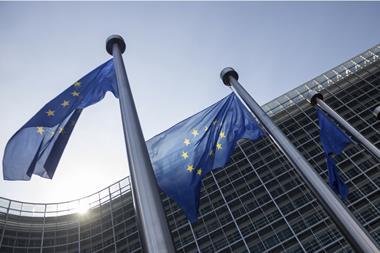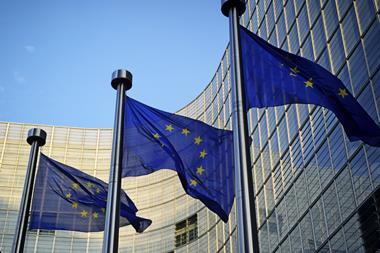Jeremy Woolfe relates some the recent efforts to unlock investment in Europe’s energy infrastructure
A plan to unleash large investment opportunities, including for pension fund asset managers, into EU cross-border energy projects has been unveiled by a group that encompasses globally known banks working together with international energy companies. According to a figure the group attributes to the European Commission, the estimate of the funding requirement to develop electricity, gas and other energy-related schemes across EU frontiers, up to the year 2020, is a colossal €1trn. However, at present, there are “many factors” that explain the difficulty to launch such projects, the group states in a study unveiled recently in Brussels.
Impediments faced by investors include that each individual project may need to sort out its own economic profile, and this has to be done working with different sets of national legislation. The study by the group sums up the challenge as overcoming a “low level of energy-policy integration and the disparities between the regulations and policies among [EU] member states”. Among other tasks is coping with a “mismatch between the long-term perspective of investors and the short-term economic and political cycles”. Furthermore, writes the group, account has to be taken of “the rapid pace of technological change” (renewables, storage, energy efficiency and so on).
The group is chaired by Edmond Alphandéry, a former economics minister in France. Since July 2013, he has been chairman of the board of directors of the Brussels think tank the Centre for European Studies. At the study’s launch, Alphandéry summed up the aims of the group as “to reduce bottlenecks for investors”. Otherwise, the present predicament of projects taking 15 years to get from conceptualisation to realisation would continue, he said.
The energy investment initiative is unusual, as it comes from the commercial world rather than EU institutions such as the European Commission’s DG Energy. This department is headed by Maroš Šefčovič, European commissioner for the Energy Union. On the commercial side of the fence, the Alphandéry group includes support from formidable financial powers. The banks with representatives involved in the study include Deutsche Bank, Goldman Sachs, HSBC, PNB Paribas and Société Géneral.
No less force comes from industry. The group’s energy companies include ERDF, which manages the public electricity-distribution network for 95% of France; IBERDROLA of Spain; SNAM, the Italian specialist in natural gas infrastructure; and Belgium’s ENGIE, which operates globally in the fields of electricity, natural gas and other energy services.
When referring to the EU Energy Union, the group’s study indicates friendly liaison with the Commission’s DG Energy. It also makes positive references to the EU’s Capital Markets Union, the €315bn Juncker investment plan and the European Investment Bank. As the members of the group would no doubt be aware, the Junker plan – the EU’s European Fund for Strategic Investments – already lists as an objective the task to remove regulatory bottle-necks, including for the Energy Union. Hence, a reasonable interpretation of the motive behind the group study is simply to catalyse a step-up in urgency in the interests of investment in energy infrastructure.
While the group itself would not stray from diplomatic terminology, a vulgar reading of its report is simply that it intends to give a kick in the pants to Brussels, to encourage a speed-up. Invited to comment on the plan, Šefčovič’s department preferred to hold its tongue.
Other pressure in parallel direction of EU cross-border energy liaison can be understood from an ‘opinion’ published by the European Economic and Social Committee (EESC). Its paper was issued almost simultaneously to the unveiling of the Alphandéry group study. The EESC calls for a “speaking-with-one-voice” approach to the EU’s energy policy and the establishment of a “safe balance of importing streams”.
Back to the bank-industry document, it lists a series of recommendations of what should be done. For example, it favours the setting up of a list of projects that meet various criteria, such as that they fit in with a pan-European energy policy. Another recommendation would boost activity by the existing Agency for the Cooperation of Energy Regulators (ACER) in its role of increasing the convergence of national regulators. ACER was set up in 2010 in Ljubljana, Slovenia, partly with this objective in mind.
Additionally, the group would like to see enhanced activity of an Ombudsman-type process of project coordination. This would create accountability for the delivery of projects locally and take steps to enhance the credit rating of senior debt, thus to facilitate access from institutional sources. The group politely goes on to praise the Commission’s “projects of common interest” concept, but it then comments that, whilst in 2013, 248 “PCIs” were listed, only 13 of them had so far been completed.
For more on global energy markets, see the Special Report in the May issue of IPE magazine









No comments yet